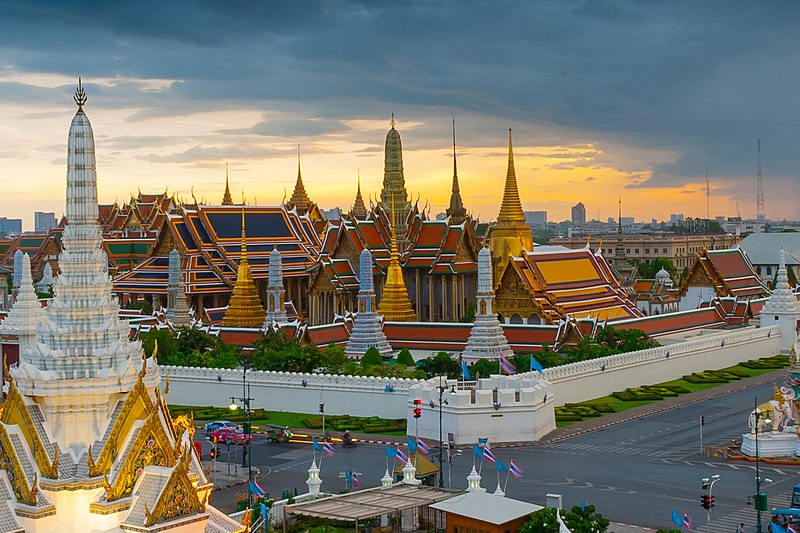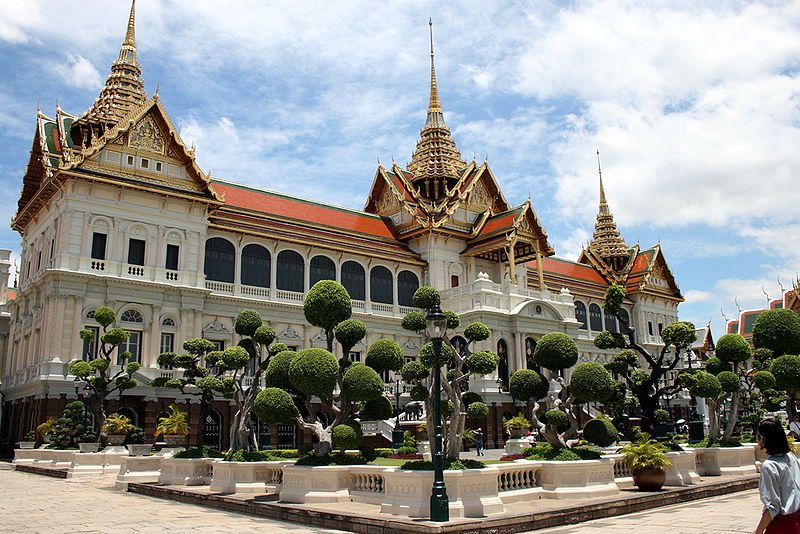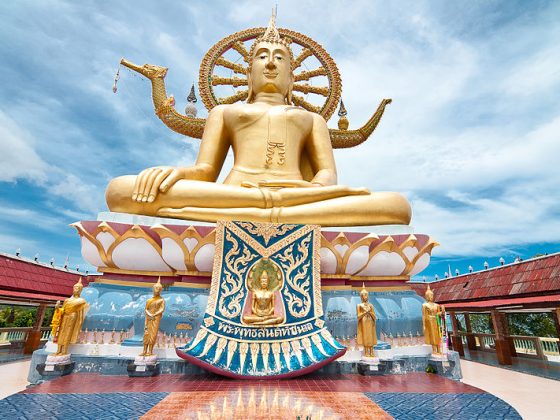Built in 1782, the Grand Palace is arguably the most famous cultural landmark in Thailand. The palace was the home of the Thai King and his royal family, the Royal Court, and the administrative seat of government, for 150 years. Featuring beautiful architecture and intricate details, this historic complex is now the site of several ceremonial events and a popularly visited site by both locals and tourists.
Layout and Orientation
The Grand Palace isn’t just a single building but is a complex of several buildings including the Wat Phra Kaew, or the Temple of the Emerald Buddha. The layout of the complex can be divided into three sections – the Outer Court, Middle Court and Inner Court.
The Outer Court is the area near the entrance and is home to public buildings, royal offices and the Temple of the Emerald Buddha, its most significant attraction. It formerly housed several government departments like the army, the treasury and civil administration, all of which the King was directly involved in.
The Middle Court or Central Court holds the King’s residence and other halls that were used for state business matters. Today, only 2 of the throne halls are open for public viewing, but it is still possible to enter the Middle Court and admire the outer details and intricacies of the hall buildings.
The Inner court was the dwelling place of the King’s royal consorts and his daughters. Although it is no longer occupied by royalty, the Inner Court remains closed from public entry.
Wat Phra Kaew
Located in the Outer Court area of the palace, the Temple of the Emerald Buddha is the most important Buddhist temple in Thailand. Built under the patronage of King Rama I, the temple enshrines the Emerald Buddha, carved from jade which gives it its emerald colour. Only the King of Thailand is allowed near the statue when the statue’s seasonal cloak is changed three times a year. The changing of the statue’s robes corresponds with the summer, winter and rainy seasons, and is said to bring good fortune to the King and the country.
The Emerald Buddha is held within the Ordination Hall or Royal Chapel which also features images of Thailand’s past kings.
Other Highlights
Unlike regular temples, Wat Phra Kaew does not contain living quarters for monks but instead features several buildings, statues and pagodas. The temple features a model of Angkor Wat which was built on the orders of King Rama IV when Cambodia was under Siamese rule. The same statue was recreated in plaster at the request of King Rama V to celebrate the Royal City’s first centenary. The temple also features a balcony with murals that tell the epic story of Ramayana, with stone inscriptions on the balcony columns that describe the murals.
Other significant sites around the Grand Palace include The Royal Pantheon, The Great Golden Stupa, the Hall of Rose Gold Buddha and more.

Important Notes
The Grand Palace is located in the historic centre of Bangkok and is easily accessible from any of the major hotel chains in the area, including those managed by Minor Hotels. Visitors can get their tickets to the palace between 8.30 a.m. and 3.00 p.m.
Given that the Palace is one of Thailand’s most sacred sites, visitors are required to adhere to a strict dress code. Long trousers and sleeved shirts or tops must be worn by both men and women. Those wearing sandals or slippers must wear socks, as walking barefeet is not allowed.










